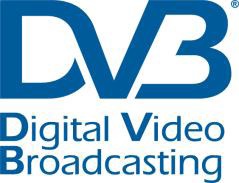 The Digital Video Broadcasting (DVB) consortium announced that it is working with the 3D@Home Consortium to encourage the development of 3DTV standards and exchange information about 3D viewing.
The Digital Video Broadcasting (DVB) consortium announced that it is working with the 3D@Home Consortium to encourage the development of 3DTV standards and exchange information about 3D viewing.
For more information visit: www.dvb.org
Unedited press release follows:
DVB FORMS LIAISON WITH 3D@HOME CONSORTIUM
Move Will Support The On Going Development Of Standards For 3DTV.
28 November 2011 – A letter of agreement confirming a liaison between the 3D@Home Consortium and DVB was signed on November 4, 2011. The purpose of the liaison between the two consortia is to encourage the development of standards for 3DTV, to share knowledge about 3D viewing, and to ensure that their work is complementary.
“3D@Home is an important organisation for 3DTV. They have many areas of interest, including the study of ‘human factors’ associated with 3DTV viewing that we are hoping to learn from. For our part, our work developing delivery specifications for 3DTV, will be helpful for 3D@home. Both organizations have things to share with each other,” commented David Wood, chair of DVB’s Commercial Module on 3DTV.
The 3D@Home Consortium was formed in 2008 with the mission to speed the commercialization of 3D into homes worldwide and provide the best possible viewing experience by facilitating the development of standards, roadmaps and education for the entire 3D industry – from content, hardware and software providers to consumers. “We are thrilled to link with DVB and communicate their standards-setting activities to the broader 3DTV eco-system” notes Heidi Hoffman, managing director of 3D@Home Consortium. “Our members – many not directly involved in the broadcasting area – use this information in their strategic decision-making, which enables the entire eco-system to develop more quickly and seamlessly.”
DVB began its 3DTV standardization work in January 2010. In February 2011, the DVB Steering Board approved the specification for a first phase 3DTV delivery system. This system was developed for broadcasters and content deliverers needing a system that works with existing HDTV receivers, provided they are used with a 3D display. This approach, termed ‘Frame Compatible’, is now a principal system in use for 3DTV delivery throughout the world and is termed DVB-3DTV Phase 1.
Services using DVB-3DTV are already available in a number of countries (US, UK, France, Spain, Germany, etc.) by satellite and broadband. Initial terrestrial broadcasts were made in the UK in summer 2011. Many sporting events of world scale are now shot in 3D and broadcast using the DVB-3DTV system. 3DTV consumer displays are available throughout the world that can interpret the DVB-3DTV signals.
The DVB Steering Board recently approved the Commercial Requirements for a second 3DTV delivery system. Termed ‘Service Compatible’, the second system is a solution required by content deliverers that enables the 2D and 3D versions of a programme to be broadcast within the same video signal, so that new 3D televisions and next-generation STBs can receive 3D programmes, while consumers with existing 2D HDTV receivers and set-top boxes can watch the 2D version. This 2D picture will probably be either the left or right image of the ‘stereo pair’. This second approach is termed DVB-3DTV Phase 2a.
Phase 2a will provide additional opportunities for 3DTV services, complementing the first specification. The DVB is also taking into account the requirements of content deliverers wanting to continue the use of a Phase 1 signal, but wish to provide additional information to improve the image quality for those with ‘new’ receivers. This may result is a Phase 2b specification in due time.
The terms ‘Frame Compatible’ and ‘Service Compatible’ follow ITU terminology.
About DVB
Digital Video Broadcasting (DVB) is an industry-led consortium of over 230 broadcasters, manufacturers, network operators, software developers, regulatory bodies and others committed to designing global standards for the delivery of digital television and data services. DVB standards cover all aspects of digital television from transmission through interfacing, conditional access and interactivity for digital video, audio and data. The consortium came together in 1993 to create unity in the move towards global standardization, interoperability and future proofing.
DVB dominates the digital broadcasting environment with thousands of broadcast services around the world using DVB’s open standards. There are hundreds of manufacturers offering DVB compliant equipment. To date there are over half a billion DVB receivers shipped worldwide. DVB standards are also widely used for other non-broadcasting applications such as data on the move and high-bandwidth internet over the air. Further information about DVB can be found at: www.dvb.org, www.mhp.org, www.dvbservices.com and www.dvbworld.org.